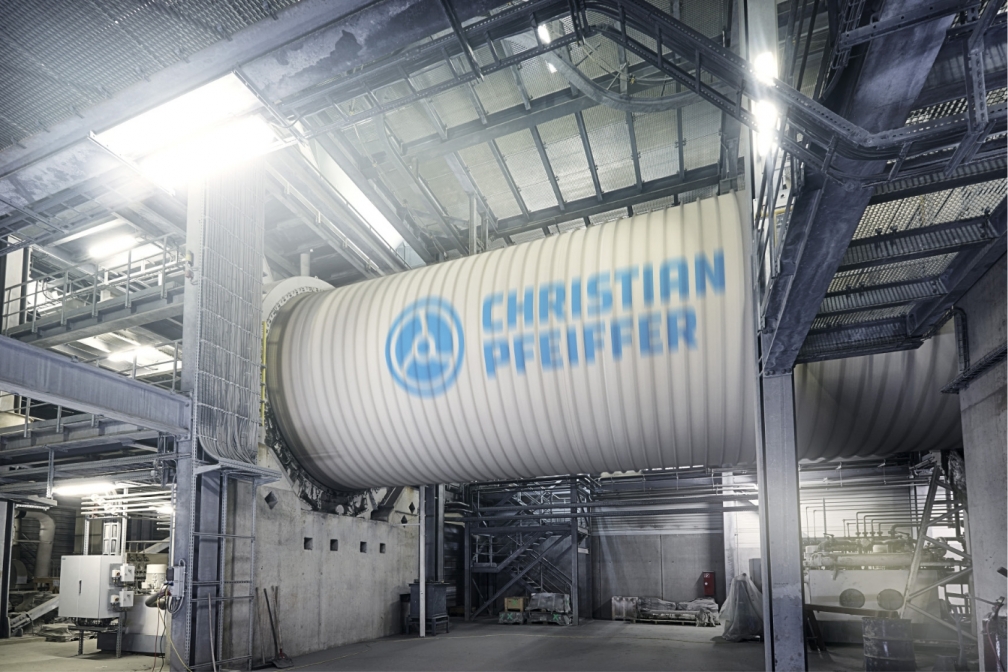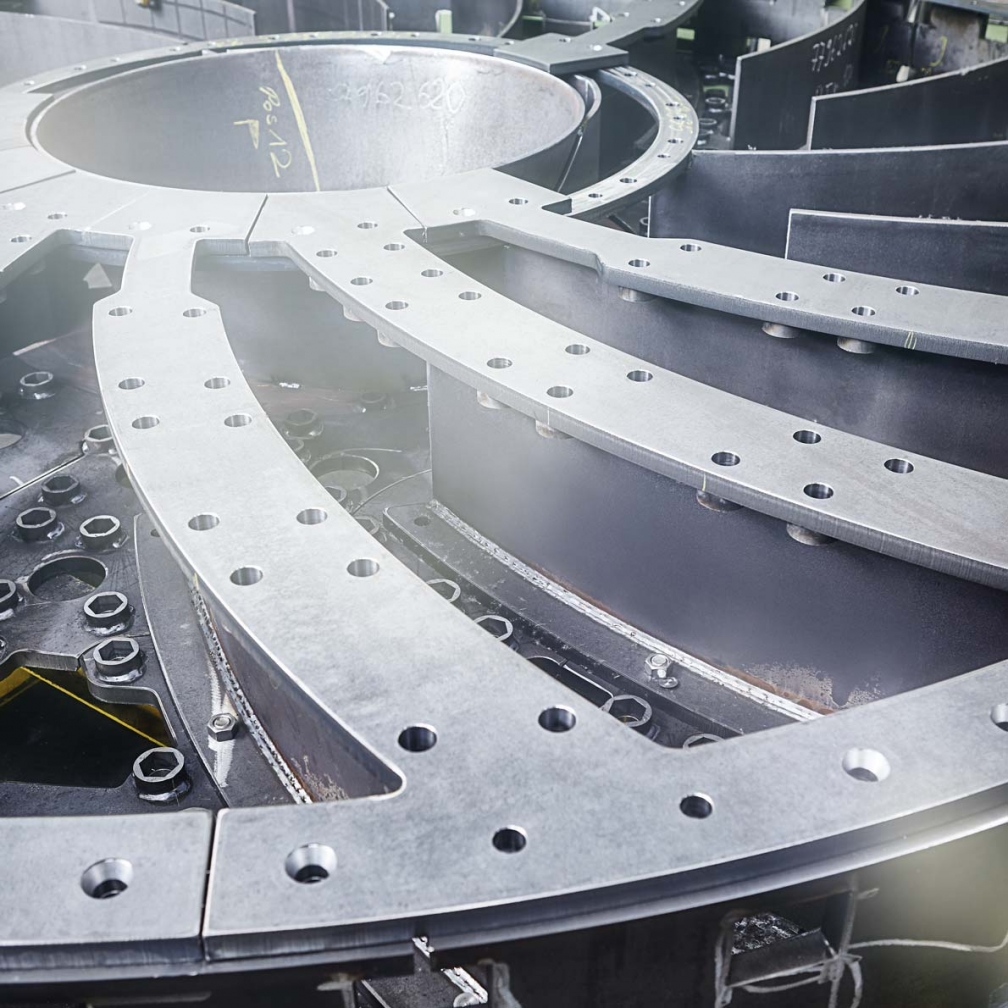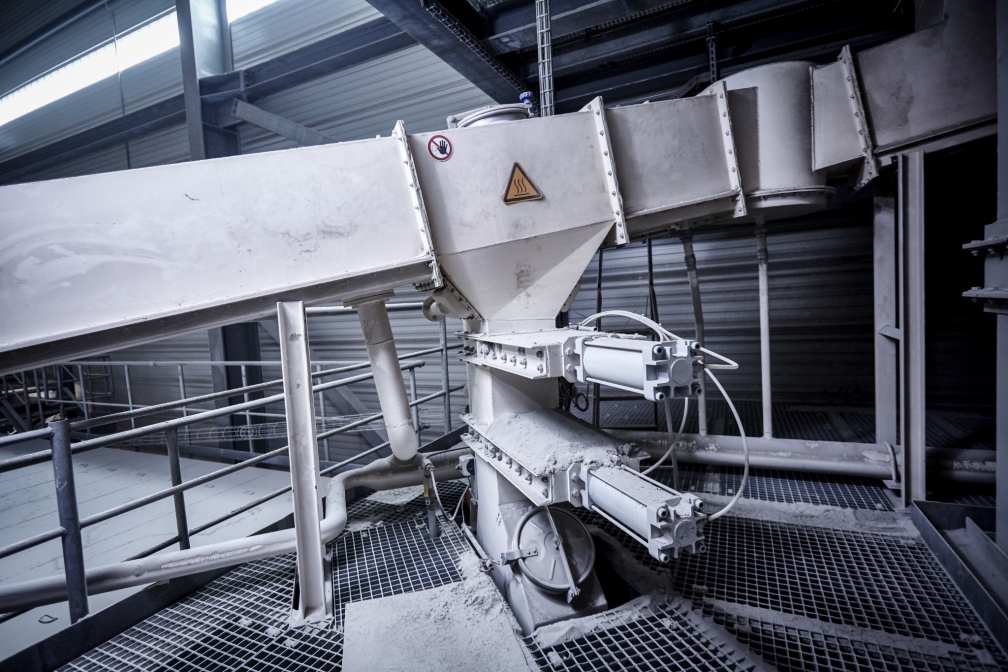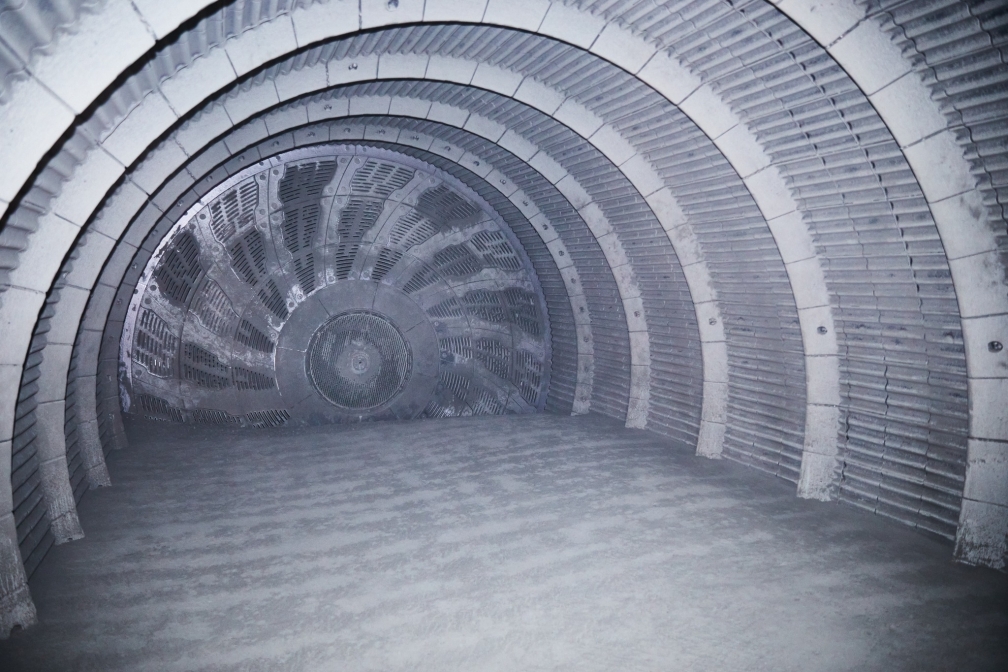
Cool your
grinding process
with the INJECTOR
Control the temperature during grinding
Grinding materials inside a ball mill converts a high percentage of the required electrical power into grinding heat which can cause problems with the material properties or further processing. A water injection system is the easiest and most effective way to control the temperature during grinding in the mill.
Technical details
Christian Pfeiffer provides three versions of the water injection systems:
- Injection into the 1st chamber via inlet (Version Coal, Version Cement)
- Injection into the 2nd chamber via outlet
- Injection into the 2nd chamber via intermediate diaphragm
We offer a solution for every type of mill. Water injection systems by Christian Pfeiffer can be used for mills with trunnion or slide shoe bearings.


more than
100 ball mill
installations worldwide
Why or when do I need water injection?
The movement of the grinding balls generates intense heat. This heat is absorbed by the material and so the material temperature rises steadily as it passes through the mill.
The product properties of some materials, such as cement, can change when becomeing too hot, for example due to gypsum dehydration. Design aspects that can limit a maximum mill temperature, such as lubrication, also come into play. The more grinding energy the production of the product requires the more likely water injection is important and necessary. More energy is needed when material has to be ground very finely, or the raw material is very difficult to grind.
Why are there different types of water injection?
Water injection helps to control the temperature in the mill. There are different causes of heat generation in the grinding process, so different water injection systems are required. For example, if the fresh material is very hot, water injection, e.g. clinker >120°C, a water injection system is used at the mill inlet. In most cases, from a process engineering point of view, a water injection system in the second grinding chamber makes sense to control the steadily increasing heat, generated by grinding. The technically most reasonable solution depends on the bearing and the drive of the mill.
How the water injection can be realized constructively depends on the bearing and the drive of the mill. There are different solutions for these variations, which are also reflected in the price. For each mill, we look for the solution that makes the most sense in terms of process technology and design and is most attractive in terms of price.
Isn´t it risky to use water in the cement grinding process?
Water in a cement grinding process must be used with caution. The outlet temperature of the material and the mill exhaust air from the mill always has to be >100°C. This ensures that the injected water is brought to evaporation and leaves the mill in the air stream. The energy required for the evaporation of the water is extracted from the material and the grinding ball charge, resulting in efficient cooling.
Since the water heating and evaporation happen very quickly, there is no hydration reaction of the cement. The principle is simple: The finer the nozzle, the finer the water droplets, and the finer the water droplets, the faster the heat extraction by evaporation.
Get your 360°Mill Check now!
The elimination of bottlenecks can lead to significant energy savings.
Let's find your bottlenecks.


AT YOUR SITE. WITH SERVICE EXCELLENCE FOR NEW AND EXISTING PLANTS.
Precise analysis for the perfect result.
We analyse your product to design the most efficient grinding plant.
- Technology center for material tests
- Laboratory for material analysis


Efficiency in grinding is our heritage and our future.
Since 1925.
Making grinding processes as efficient as possible is a science in itself – one to which we dedicate our entire expertise and spirit of innovation. From the invention of the first MONOBLOC diaphragm to the technical fine-tuning of the separator QDK. How we became what we are today.






